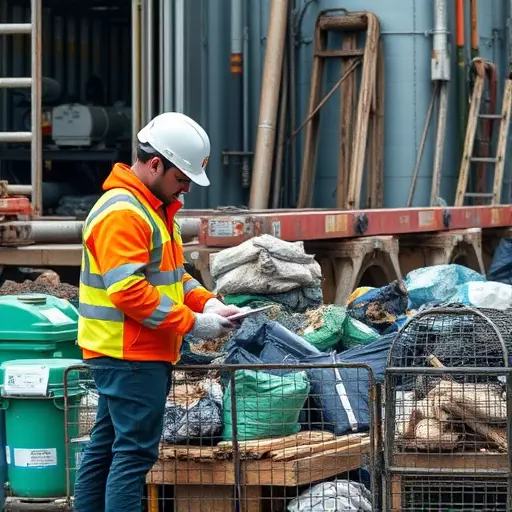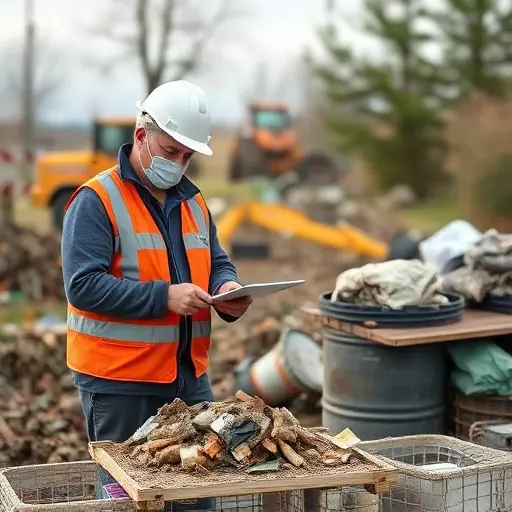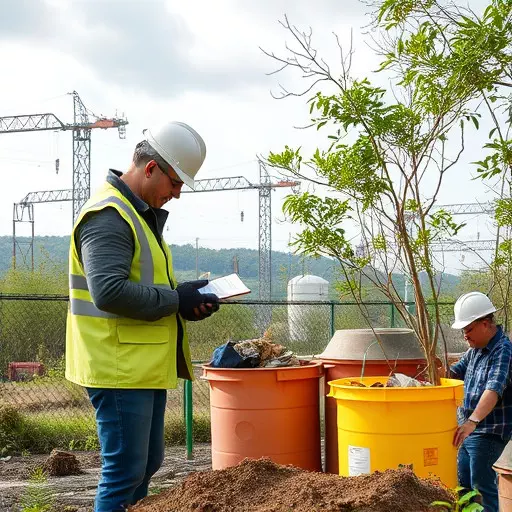Environmental compliance inspections are crucial for verifying businesses adhere to regulations that safeguard public health and the environment. These inspections involve record reviews, site visits, interviews, and audits focusing on aspects like waste management, energy use, air quality control, water efficiency, noise & light pollution, and hazardous waste handling. A key element is the hazardous waste management audit, ensuring proper protocols for identification, classification, storage, transport, and disposal in line with industry best practices and legal standards. Effective environmental regulatory frameworks drive ecological sustainability by setting clear norms for air quality, water pollution, waste management, and natural resource conservation during inspections, fostering accountability and responsible business practices.
Environmental compliance inspection is a critical process ensuring businesses and organizations adhere to environmental laws and regulations. This comprehensive overview delves into the intricacies of understanding these inspections, focusing on key aspects like the role of environmental regulatory frameworks and hazardous waste management audits. By exploring best practices, this guide equips professionals with essential tools for effective environmental compliance inspections, fostering sustainable operations and minimizing legal risks.
- Understanding Environmental Compliance Inspection: A Comprehensive Overview
- The Role of Environmental Regulatory Frameworks in Ensuring Compliance
- Uncovering Key Aspects of Hazardous Waste Management Audit
- Best Practices for Effective Environmental Compliance Inspections
Understanding Environmental Compliance Inspection: A Comprehensive Overview

Environmental compliance inspections are crucial processes designed to ensure businesses and organizations adhere to environmental regulatory frameworks. These thorough checks involve evaluating various aspects, from waste management practices to energy consumption, to confirm that operations do not cause harm to the environment or public health. By conducting regular inspections, regulatory bodies can identify potential violations, non-compliance with permits, or even illegal activities related to pollution and hazardous waste management.
A comprehensive environmental compliance inspection includes a review of records, site visits, and interviews with personnel. During these visits, inspectors examine facilities for correct implementation of environmental management systems, proper handling and disposal of hazardous waste, air quality control measures, water usage efficiency, and adherence to noise and light pollution standards. A hazardous waste management audit is also conducted to assess the identification, classification, storage, transportation, and disposal protocols in place, ensuring they meet industry best practices and legal requirements.
The Role of Environmental Regulatory Frameworks in Ensuring Compliance

Environmental regulatory frameworks play a pivotal role in driving and ensuring environmental compliance during inspections. These frameworks are designed to establish standards and regulations that govern businesses’ and industries’ operations, focusing on minimizing their ecological footprint. They cover various aspects, from air quality control to water pollution prevention, waste management, and conservation of natural resources. By setting clear guidelines, these regulations empower regulatory bodies to conduct thorough inspections, identify non-compliance, and enforce necessary actions.
During an environmental compliance inspection, regulatory officers assess whether a facility adheres to the prescribed standards and permits. This process involves reviewing records, examining operations, and testing for potential pollutants or hazardous waste management issues. Effective enforcement of these frameworks acts as a deterrent, encouraging businesses to maintain sustainable practices. Moreover, it ensures that any deviance from the set norms is promptly addressed, fostering a culture of accountability and environmental stewardship, particularly in hazardous waste management audits.
Uncovering Key Aspects of Hazardous Waste Management Audit

During an environmental compliance inspection, a crucial aspect that auditors delve into is the organization’s hazardous waste management practices. This involves scrutinizing procedures for identifying, handling, storing, and disposing of hazardous substances as per the stipulations of environmental regulatory frameworks. Auditors assess whether these processes align with legal requirements to ensure no contamination of soil, water, or air.
A thorough audit uncovers key elements such as record-keeping practices, employee training, emergency response plans, and implementation of best available technologies for minimizing hazardous waste generation. It also evaluates the organization’s ability to conduct internal audits, implement corrective actions, and maintain effective communication with regulatory bodies. By focusing on these aspects, auditors ensure that businesses operate sustainably and responsibly in compliance with environmental regulations.
Best Practices for Effective Environmental Compliance Inspections

To conduct effective environmental compliance inspections, it’s essential to incorporate best practices that align with environmental regulatory frameworks. One key practice is thorough preparation, which includes reviewing relevant permits, licenses, and previous inspection reports. Inspections should be conducted by well-trained personnel who understand both industry standards and specific environmental regulatory requirements. A systematic approach, covering all aspects of hazardous waste management audit, is crucial to ensure no potential violations are overlooked.
Regular communication between inspectors and facility personnel can facilitate a cooperative environment, enhancing the accuracy of data collected. Documentation plays a vital role; every observation, non-compliance found, and corrective action recommended should be meticulously recorded. Utilizing digital tools for data capture and analysis streamlines the process, allowing for faster reporting and follow-up actions. Staying updated with changes in environmental regulatory frameworks is also imperative to conduct inspections that are both comprehensive and compliant.


